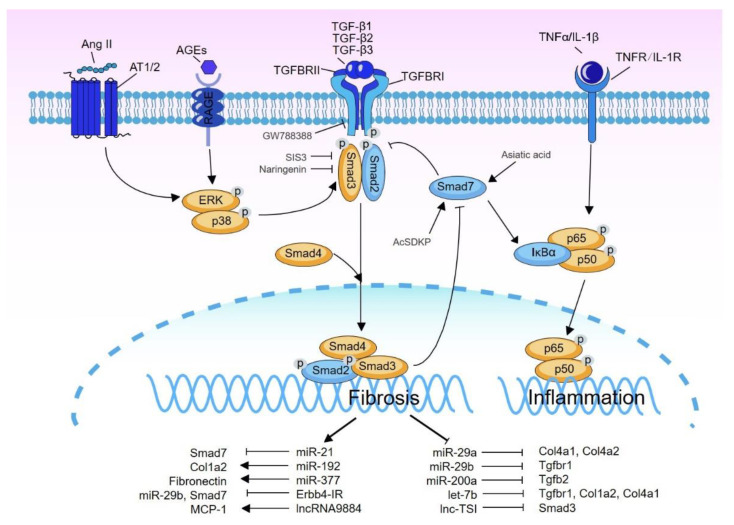Figure 1.
The regulatory role of TGF-β signal in DN. TGF-β ligands (TGF-β1/2/3) transduce the transmembrane signal through binding to TGFBR2 and TGFBR1, resulting in the phosphorylation of downstream Smad2/3. Phosphorylated Smad2/3 form the complexes with Smad4 and translocate into the nucleus to regulate the transcription of target genes. Smad2/3 can also be activated by signal crosstalk with ERK/p38 MAPK pathway. Smad7, an inhibitory Smad, acts to inhibit Smad2/3 phosphorylation by targeting TGFBR1. In addition, Smad7 also induces IκBα, an NK-κB inhibitor, to suppress NF-κB signaling. TGF-β also induces many Smad3-dependent miRNAs/lnRNAs to regulate DN, among which miR-21, miR-192, miR-377, Erbb4-IR, and lncRNA9884 are upregulated and pathogenic. However, miR-29a/b, miR-200a, let-7b, and lnc-TSI are downregulated and renoprotective. The TGF-β signal-targeted inhibitors or agonists, whose efficacy for DN treatment has been validated in animal studies, are also labeled in the illustration. The line with an arrow end means positive regulation, while that with the blunt end means negative regulation or inhibition.

